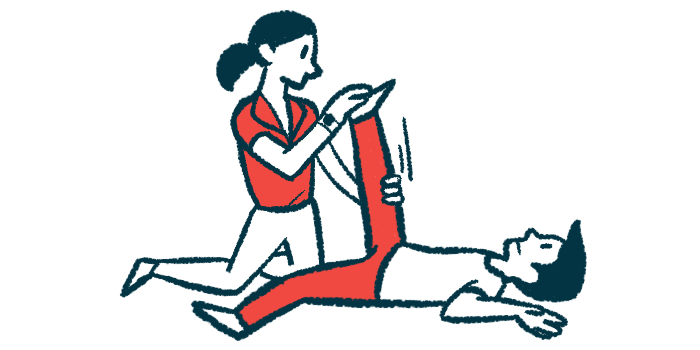Strength Training Fails to Improve Orthostatic Hypotension in Pilot Study

Eight weeks of leg strength training failed to prevent sudden drops in blood pressure upon standing, a condition called orthostatic hypotension, in people with Parkinson’s disease, according to a small pilot study.
“Further controlled clinical trials with larger sample sizes and sufficient power are required to investigate the effect of strength training on [orthostatic hypotension] and cognition in [Parkinson’s],” the researchers wrote.
The findings were published as a letter to the editor, titled “Effect of strength training on orthostatic hypotension in Parkinson’s disease—a pilot study,” in Clinical Autonomic Research.
Orthostatic hypotension describes a sudden drop in blood pressure that happens when standing from a sitting or lying down position, causing dizziness or lightheadedness, and in more severe cases, fainting. Many people with Parkinson’s or other neurological diseases experience this type of nonmotor symptom as a result of damage to the brain circuits involved in blood pressure regulation.
Medications and other treatment approaches, such as exercise, are used to manage orthostatic hypotension in Parkinson’s. While lower body strength training is often incorporated into treatment regimens, no evidence-based trials have thoroughly evaluated its effects on orthostatic hypotension in people with the disease.
In the pilot study, researchers set out to investigate whether eight weeks of leg muscle strength training in combination with standard treatments could improve signs of orthostatic hypotension in Parkinson’s patients.
Between April 2014 and October 2018, 331 Parkinson’s patients were screened for signs of orthostatic hypotension, characterized by a drop in blood pressure during a table-tilt test. The test involved lying on a bed for 10 minutes, after which the bed is tilted to an upright position for another 10 minutes, with continuous blood pressure monitoring.
Overall, 29 patients — 16 females — with a mean age of 69 and disease duration of 4.3 years met the study’s inclusion criteria. Participants generally had mild-to-moderate disease and mild cognitive impairment.
The study was conducted in a crossover design, with half of the participants undergoing strength training for eight weeks while the other half served as a control group. After an eight-week washout period, the groups were flipped, with participants previously in the control group undergoing the training and vice versa.
Strength training consisted of twice weekly sessions lasting 45–60 minutes, with a 20-minute warm-up, 20 minutes of leg strength training, and about 20 minutes of balance training, the intensity of which was adjusted for each patient. Calf-muscle exercises were also performed at home three times weekly during the strength training period.
The trial’s main goal was to lessen the drop in systolic blood pressure — the pressure in the arteries during a heart beat — that patients experienced during the tilt-up test. The goal was to achieve about a 10 mmHg increase in blood pressure compared with values measured before the strength training; mmHg refers millimeters of mercury, a pressure measurement.
At the study’s start, the average drop in systolic blood pressure during the table-tilt test was 50.5 mmHg. The most frequently reported autonomic symptoms, or those relating to involuntary bodily functions, were dizziness (80%) and syncope (fainting; 40%).
After strength training, an improvement in systolic blood pressure during the table-tilt test was observed, but the finding did not reach statistical significance, and the trial failed to meet its primary goal. Other aspects of blood pressure measurements were also not significantly improved.
The head-up tilt test is a passive assessment of orthostatic hypotension and does not activate the leg muscles targeted during strength training. More significant differences may have been observed if an active standing test had been used, the team suggested.
The researchers added that it was not determined whether strength training actually improved muscle strength, and a longer training period might be needed to see meaningful gains. Additional effects of co-existing health problems and other medications cannot be ruled out, they also noted.
Secondary endpoints included cognitive function, mobility, and life quality. Since no primary endpoints were met, secondary endpoints were not analyzed, the researchers noted.
“Future studies should be powered to explore the effect of strength training on other parameters such as orthostatic complaints and cognitive symptoms associated with [Parkinson’s],” they wrote.








